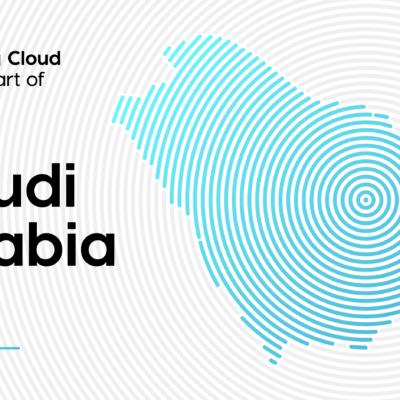Debunking the security myth around cloud
Debunking the security myth around cloud

Introduction and context setting statement
As Saudi Arabia aims to diversify the country’s economy and reduce its reliance on oil, Saudi government besides other initiatives has also been actively promoting cloud computing as part of its Vision 2030 plan .As part of this initiative, the government has launched several programs to encourage the adoption of cloud computing, such as the National Transformation Program and the Saudi Cloud Computing Association.
In addition, the country’s regulatory framework has been adapted to support the use of cloud
computing. The Communications and Information Technology Commission (CITC) is
responsible for regulating and supervising the use of cloud computing in the country has issued guidelines and regulations to ensure that cloud services are secure, reliable, and compliant with local laws and regulations.
Debunking the security myth around cloud
Cloud computing has become a popular solution for organizations seeking secure and efficient computing services. Compared to traditional on-premises technology solutions, cloud computing offers a range of benefits that can enhance security and operational efficiency. In this article, we will explore why cloud computing is more secure than traditional on-premises computing solutions, including the rationale behind it, details about cloud provider security certifications, and operational benefits of secure cloud computing.
Rationale for Cloud Computing Security
Cloud computing offers a number of security benefits that can make it a more secure choice than traditional on-premises computing solutions. One key benefit is that cloud providers typically have more resources available to dedicate to security. This means that they can invest in more advanced security technologies and hire more security experts to monitor and respond to potential threats. Additionally, cloud providers often have more experience dealing with security issues, which means they are better equipped to respond to incidents quickly and effectively.
Another reason why cloud computing can be more secure than traditional on-premises solutions is that cloud providers often have better physical security measures in place. Cloud providers typically house their data centers in secure facilities with restricted access and advanced security technologies such as biometric authentication and video surveillance. These measures help to prevent unauthorized access to servers and data. Cloud-based providers also ensure data residing in their facilities are encrypted in transit but also at rest ensuring data can only be accessed by the data owner.
Cloud Provider Security Certifications
Cloud providers typically undergo rigorous security certifications to ensure that they meet industry standards for security. Some of the most common certifications include:
– SOC 2: A certification that verifies that a cloud provider has implemented adequate security controls to protect customer data.
– ISO 27001: A certification that verifies that a cloud provider has implemented a comprehensive information security management system (ISMS) to protect customer data.
– PCI DSS: A certification that verifies that a cloud provider has implemented adequate security controls to protect credit card data.
These certifications help to ensure that cloud providers have implemented best practices for security and are regularly audited to maintain compliance.
Operational Benefits of Secure Cloud Computing
In addition to the security benefits, cloud computing also offers a number of operational benefits that can enhance security. For example, cloud providers typically offer automated backups and disaster recovery solutions, which can help to ensure that data is always available in the event of a disaster or outage. Cloud providers also typically offer more advanced monitoring and alerting solutions that can quickly detect and respond to security threats.
Another operational benefit of cloud computing is scalability. Cloud providers by and large offer the ability to scale up or down as needed, which can help organizations to quickly respond to changing security threats. For example, if an organization experiences a sudden increase in traffic or a security breach, they can quickly scale up their computing resources to handle the increased demand or mitigate and alert, report on the threat.
Below we list 8 areas of why we stand by cloud computing is more secure:
- Cloud architecture is homogeneous
The complexity of terrestrial networks has increased as they have grown, creating substantial security risks. These networks have been constructed over time and include an average of over twenty security technologies that do not integrate with one another, lack a common management and logging framework, and may hinder each other’s threat detection and enforcement capabilities. The traditional data centre’s network defenders face a significant disadvantage against today’s complex threats due to their outdated tooling and methods compared to attackers. In contrast, public clouds are a recent innovation, and cloud providers have used a uniform blueprint and built-in security capabilities throughout their data centres. This approach results in a smaller attack surface and fewer vulnerabilities to exploit, as security is present everywhere.
- Public cloud providers invest heavily in security innovation
Investment in security innovation is a top priority for public cloud providers. Unlike traditional data centres, cloud providers have built their entire business on the cloud platform, offering not only hosting environments but also PaaS and SaaS services that drive their core businesses. As a result, protecting the infrastructure and cloud services is of utmost importance, and they invest heavily in security research and innovation, with billions of dollars collectively spent. This is evident in the frequent appearance of public cloud providers’ names among the researchers credited with discovering vulnerabilities.
- Patching and security management are consistent
The consistent relationship between patching and security management is evident from the latest security research by Verizon, which highlights that errors in configuration and unpatched vulnerabilities are the primary causes of security breaches in enterprises. However, in traditional networks, security administration and patching can be extremely challenging. Critical systems may lack effective backups or good network isolation, and security controls may not have a centralized administration point. With over twenty onsite security products, each with its own management console, mistakes are inevitable. In contrast, public cloud frameworks provide centralized mechanisms for patching and security administration. Cloud providers handle infrastructure patching entirely, with minimal customer intervention. Even when customers are required to patch virtualized operating systems and components, the cloud infrastructure includes tooling for doing so on a rhythm and schedule that minimizes disruption. Similarly, with security policy and administrative controls, sensors and enforcement points are integrated into the cloud infrastructure, and the management console is incorporated with the administration of the customer’s cloud estate.
- Security architecture changes are much easier
One of the reasons why security setups in on-premises systems are so complicated is that making changes to the vendor or tool types is a challenging task. This is mainly because the risk of disrupting the system’s operations is high. As a result, new tools are usually added to the existing security products, resulting in a chain of security products. In contrast, in the public cloud, new security capabilities can be easily integrated into the overall security architecture and cloud administration structures as a service. Customers can trial new capabilities within their own environments to evaluate the effectiveness and applicability of the tools. This allows the customer’s cloud security architects to maintain a security design that is efficient and effective by taking advantage of the latest advancements.
- Public cloud providers attract and retain top cybersecurity talent
To be sure the cybersecurity skills shortage is being felt by everyone in every vertical and every geography. Still, cloud providers invest heavily in early recruitment, training/re-training and retention of security professionals. By offering interesting and innovative work in the world of cyber and the training to build sought-after skills, cloud providers make a very compelling case for candidates in a hyper-competitive market.
- Continuous compliance assurance
Public cloud operators are required to comply with the regulatory mandates, laws, and frameworks of the countries they operate in. By adopting public cloud Infrastructure-as-a-Service (IaaS), customers benefit from deploying on an architecture that has earned certificates of compliant operation for numerous standards and frameworks, such as PCI, ISO, SOC, and FedRamp. The cloud service provider (CSP) invests resources and time to maintain these authorizations to operate, which represents a significant savings for customers. CSPs also provide evidence of their certificates and reporting details to give customers visibility into the attestation and means of compliance. Security assurance is also implemented within the security operations of cloud providers, ensuring that teams work to maintain compliance through design, testing, and implementation. Public clouds use DevSecOps as a mainstay to achieve continuous security improvement, making compliance a natural outcome.
- Resilience to threats
Security incidents are an unfortunate reality of modern digital life, so security best practices dictate that every layer of design and protection should assume a potential compromise. To create highly resilient networks and systems against attacks, layered defences should be deployed, alongside quick incident response and recovery. Tiered defences serve as multiple barriers to attackers, making it harder for them to succeed in breaking through the system. As a result, the progression of steps taken by attackers to compromise or steal data increases in time and difficulty. However, in traditional networks, tiered defences can be inconsistent and varied due to geographical differences and network age. In contrast, cloud architectures are homogeneous, allowing for the uniform application of tiered defences and continuous logging and monitoring. Ultimately, cloud architecture provides pervasive and sophisticated instrumentation for detecting and responding to threats, making it highly resilient.
- Data encryption is key
With public cloud operators having to ensure compliance to local data regulations, their platforms adhere to strict data encryption techniques. All data entering and exiting the cloud platform are encrypted in transit and at rest. The majority of public cloud operators grant the option of customers using their own encryption keys, thereby underwriting that only the customer can decrypt their data.
Summing up
Cloud computing has become a popular choice for organizations seeking secure and efficient computing services. Compared to traditional on-premises computing solutions, cloud computing offers a range of benefits that can enhance security and operational efficiency. These benefits include better physical security measures, more advanced security technologies, rigorous security certifications, and operational benefits such as automated backups, scalability, security alerting and reporting. As a result, cloud computing can be a more secure choice for organizations looking to protect their data and applications. Abiliti have the knowledge and know-how to ensure your company and data are protected while making full use of the available cloud based security capabilities.
by Neil Smith | Abiliti Cloud & Infrastructure Architecture

